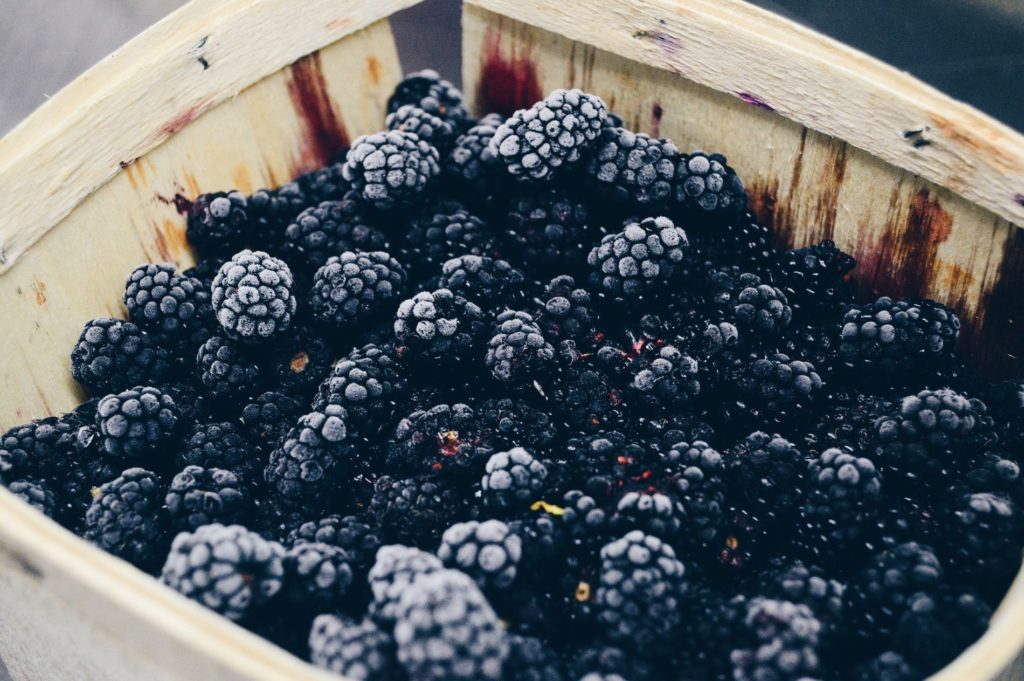As we move into summer and start spending more time outdoors, it’s important to educate yourself on proper sunscreen usage, as well as the health benefits from sensible sun exposure. It is important to find a balance between harnessing the health benefits of sunshine while protecting your skin and body from UV radiation damage. Excessive sun exposure is linked to multiple forms of cancers including basal cell carcinoma, squamous cell carcinoma, and melanoma. To help prevent these skin cancers, the American Academy of Dermatology (AAD) suggests applying sunscreen of SPF 30 or higher 30 minutes before going outside and then reapplying every 2 hours while outside. Sunscreen is to be applied to all areas of the skin not covered by clothing. While these guidelines from the AAD should not be ignored, it is critical to address the consequences of effectively eliminating all sun exposure, such as vitamin D deficiency. The goal of this article is to move away from the ‘sun is dangerous’ paradigm which is promoted by the AAD. While excessive sun exposure may cause skin damage, the negative health consequences with avoiding sunshine are much more concerning for our overall health.
Vitamin D deficiency and cancer
It is estimated that upwards of 40% of American adults are vitamin D deficient, which is defined as having a serum level below 20 ng/mL 4. Using 30 ng/mL as the cutoff for vitamin D insufficiency, it is estimated 75% of American adults and teens do not meet this mark. Most functional medicine doctors recommend an optimal range of 60-80 ng/mL, which would place more than 90% of Americans in the sub-optimal category for vitamin D levels. Optimal vitamin D levels are protective against many forms of disease including cancer, heart disease, infection, autoimmune diseases like lupus, celiacs, multiple sclerosis, and neurodegenerative diseases such as Parkinson’s, Alzheimer’s, and ALS.
Research shows breast cancer and vitamin D deficiency are closely associated, and one study showed women with a vitamin D level higher than 60 ng/mL were 83% less likely to develop the disease 9. Vitamin D is one of the body’s most potent anti-cancer fighting compounds. With most of America already vitamin D deficient or insufficient, and spending much more time indoors compared to our ancestors, it is dangerous to completely cover our skin with sunscreen. In effect, we are blocking the production of one of our most potent anti-cancer fighting compounds by wearing sunscreen every day, placing us at an even greater risk of developing all forms of cancer, including skin cancer. Individuals with darker skin need even more exposure to sunshine because the increased melanin content in the skin slows the rate of vitamin D production.
Nutrition and skin cancer

One of the best ways to protect our bodies from skin cancer is to make sure we are eating a diet rich in the antioxidants designed to protect us from cancer cell growth and proliferation. Excessive exposure to UV radiation can lead to free radical formation which damage all cell types and cause inflammation and the potential for cancer. Firstly, foods with high concentrations of the flavonoid proanthocyanidin are particularly useful in protecting our body from UV radiation damage and skin cancer 2. Proanthocyanidins act in the body as an antioxidant, anticancer, antidiabetic, and antimicrobial compound 6. Foods highest in proanthocyanidins include blackberries, blueberries, marionberries, huckleberries, grape seeds, hawthorn berries, rose hips, and pine bark.
Another food compound which is effective at preventing skin cancer is the flavonoid apigenin 1. Apigenin also acts as an antioxidant and anti-inflammatory compound and specifically protects our skin from UV radiation damage. The best food sources of apigenins include chamomile, apples, oranges, celery, onions, and endive. Opt for a bottle of iced chamomile tea during your next day out in the sun!

The last compound to mention is resveratrol. Made popular for the health benefits associated with drinking red wine, resveratrol is a potent anti-oxidant and anti-cancer fighting compound. Resveratrol promotes healthy cell differentiation, and being that abnormal cell division is one of the bases for tumor formation, resveratrol is exceedingly important for protecting ourselves from all types of cancer. The best dietary sources of resveratrol include grapes, cranberries, blueberries, red and white wine, peanuts, and cocoa. If individuals make a conscious effort to increase the consumption of these foods, skin damage and the potential for developing cancer will significantly be reduced.
Benefits of sunshine
There are many health benefits from regular, sensible sunshine exposure. In addition to vitamin D production, UV rays from the sun stimulate the production of melanocyte stimulating hormone (MSH) which increases skin pigmentation and sexual arousal, as well as suppresses appetite 1. For patients looking to lose weight, 10 minutes of direct sunlight exposure first thing in the morning assists hormone production and Circadian rhythm. Additionally, UV rays produce beta-endorphins and natural opiates which help decrease pain and inflammation, and promote relaxation in the body 1. Natural opiates and beta-endorphins produced within the body are stronger and more effective than pharmaceutical pain killers that often come with a host of side effects and risk of dependency. Finally, UV rays help our body produce calcitonin, a vasodilatory peptide which helps protect the body’s cardiovascular system from problems such as high blood pressure (hypertension) and cardiovascular disease (CVD) 1. With the multitude of drugs aimed at weight loss, sexual dysfunction, hypertension, CVD and chronic pain, more attention should be paid to direct sun exposure as a clinically viable intervention for these conditions.
Avoid oxybenzone
When purchasing a sunscreen, make sure to avoid products containing oxybenzone. Research shows that oxybenzone is an endocrine disruptor, meaning it alters your body’s hormonal system. Alterations in the hormonal system can lead to an array of detrimental health conditions including weight gain, chronic fatigue, altered pregnancy, sexual dysfunction and cancer among others 8. Not only does oxybenzone act as an endocrine disruptor itself, it also enhances your body’s absorption of other hormone disrupting chemicals such as toxic herbicides, pesticides, and insect repellants 5. Oxybenzone can damage our hormonal system and increase the risk of all kinds of cancer including skin cancer. Other active ingredients highly absorbable into the bloodstream that can potentially pose a threat to your health include avobenzone, octocrylene, and ecamsule 10.
What should I use?

After reading this article, you may want to throw away your sunscreen and lay in the sun for hours on end with minimal clothing. Do not do this! While the benefits of sun exposure are immense, the potential for skin damage is still prevalent. If you are planning to spend more than 20 minutes in direct sunlight, make sure to apply non-nanoscale zinc oxide or titanium dioxide. Non-nanoscale means the sunscreen will not easily absorb through your skin and into your bloodstream like traditional sunscreens with microscopic particles that easily cross the skin barrier. If kept on the surface, zinc oxide and titanium dioxide are safe on your endocrine system. That being said, if absorbed into your bloodstream, both compounds can have similar detrimental effects as oxybenzone, so make sure to buy the non-nanoscale version! Pay special attention to areas like the nose, top of the ears, shoulders, and back of the neck, because these areas are often exposed to more sun. We recommend the sun care products from the company Badger Healthy Body Care due to their high quality and avoidance of toxic chemicals like oxybenzone.
Post written by Dr. Riley Kulm, DC. Check out Dr. Riley Kulm’s bio here.

References
- Greenfield, B. (N.d.) Is the Sun the Ultimate Source of Health and Vitality or just a Giant Orange Cancer Circle in the Sky? Ben Greenfield Fitness. Retrieved from: https://bengreenfieldfitness.com/article/lifestyle-articles/natural-sun-protection-foods/
- Katiyar, S.K. (2015). Proanthocyanidins from grape seeds inhibit UV-radiation-induced immune suppression in mice: detection and analysis of molecular and cellular targets. Photochemistry. Photobiology., 91 (2015), pp/ 156-162.
- Mercola, J. (2020). Sunscreen Safety Questioned Yet Again. Mercola. Retrieved from https://articles.mercola.com/sites/articles/archive/2020/02/05/oxybenzone-sunscreen.aspx
- Mercola, J. (2019). Top 5 Signs of Vitamin D Deficiency. Mercola. Retrieved from https://articles.mercola.com/sites/articles/archive/2019/01/01/signs-of-vitamin-d-deficiency.aspx
- Pont AR, Charron AR, Brand RM. Active ingredients in sunscreens act as topical penetration enhancers for the herbicide 2,4-dichlorophenoxyacetic acid. Toxicol Appl Pharmacol. 2004;195(3):348‐354. doi:10.1016/j.taap.2003.09.021
- Rauf, A. Et al. (2019). Proanthocyanidins: A Comprehensive Review. Biomedicine & Pharmacology. Vol. 116. August 2019, 108999
- Sunscreen FAQs. (n.d.). American Academy of Dermatology. Retrieved from: https://www.aad.org/public/everyday-care/sun-protection/sunscreen-patients/sunscreen-faqs
- The Trouble With Ingredients in Sunscreen. (N.d.). Environmental Working Group (EWG). Retrieved from: https://www.ewg.org/sunscreen/report/the-trouble-with-sunscreen-chemicals/
- McDonnell SL, Baggerly CA, French CB, Baggerly LL, Garland CF, et al. (2018) Breast cancer risk markedly lower with serum 25-hydroxyvitamin D concentrations ≥60 vs <20 ng/ml (150 vs 50 nmol/L): Pooled analysis of two randomized trials and a prospective cohort. PLOS ONE 13(6): e0199265. https://doi.org/10.1371/journal.pone.0199265
- Matta MK, Zusterzeel R, Pilli NR, et al. Effect of Sunscreen Application Under Maximal Use Conditions on Plasma Concentration of Sunscreen Active Ingredients: A Randomized Clinical Trial. JAMA. 2019;321(21):2082–2091. doi:10.1001/jama.2019.5586

